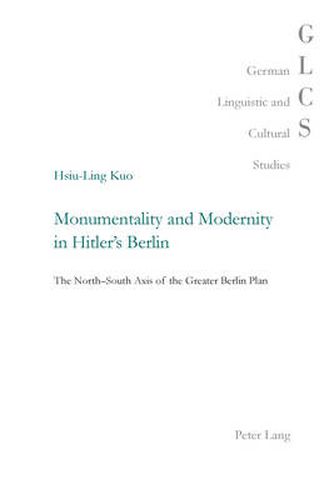Readings Newsletter
Become a Readings Member to make your shopping experience even easier.
Sign in or sign up for free!
You’re not far away from qualifying for FREE standard shipping within Australia
You’ve qualified for FREE standard shipping within Australia
The cart is loading…






This title is printed to order. This book may have been self-published. If so, we cannot guarantee the quality of the content. In the main most books will have gone through the editing process however some may not. We therefore suggest that you be aware of this before ordering this book. If in doubt check either the author or publisher’s details as we are unable to accept any returns unless they are faulty. Please contact us if you have any questions.
The contentious relationship between modernism and totalitarianism is a key element in the architectural history of the twentieth century. Post-war historiography refused to admit any overlap between the high modernism of the 1920s and the architecture of National Socialism, as it contradicted the definition of modernism as the essential architectural expression of liberal democracy. However, National Socialist architectural history cannot be fully explored without the broader historical context of modernity. Similarly, a true understanding of modernism in architecture must acknowledge its authoritarian aspects.
This book clarifies the architectural discourse in which the Greater Berlin Project of the Third Reich was produced. The association of monumentality with National Socialist architecture in the 1930s created a polarization between the classical tradition and radical modernism that provoked vigorous and acrimonious debate that lasted into the 1980s. In the attempt to reconcile the paradoxical and competing aspirations for monumentality and historicity on one hand, and for technological advance on the other, the planning of Berlin is shown to reflect the wider paradoxes of National Socialist ideology.
$9.00 standard shipping within Australia
FREE standard shipping within Australia for orders over $100.00
Express & International shipping calculated at checkout
This title is printed to order. This book may have been self-published. If so, we cannot guarantee the quality of the content. In the main most books will have gone through the editing process however some may not. We therefore suggest that you be aware of this before ordering this book. If in doubt check either the author or publisher’s details as we are unable to accept any returns unless they are faulty. Please contact us if you have any questions.
The contentious relationship between modernism and totalitarianism is a key element in the architectural history of the twentieth century. Post-war historiography refused to admit any overlap between the high modernism of the 1920s and the architecture of National Socialism, as it contradicted the definition of modernism as the essential architectural expression of liberal democracy. However, National Socialist architectural history cannot be fully explored without the broader historical context of modernity. Similarly, a true understanding of modernism in architecture must acknowledge its authoritarian aspects.
This book clarifies the architectural discourse in which the Greater Berlin Project of the Third Reich was produced. The association of monumentality with National Socialist architecture in the 1930s created a polarization between the classical tradition and radical modernism that provoked vigorous and acrimonious debate that lasted into the 1980s. In the attempt to reconcile the paradoxical and competing aspirations for monumentality and historicity on one hand, and for technological advance on the other, the planning of Berlin is shown to reflect the wider paradoxes of National Socialist ideology.